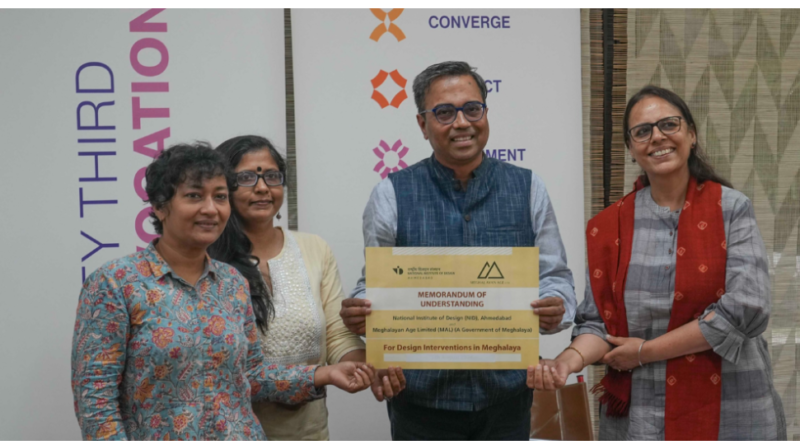NID Ahmedabad and Meghalaya Government Ink MoU for Innovative Design Interventions
BILKULONLINE
Ahmedabad, Sep 8: The National Institute of Design (NID), Ahmedabad, has entered into a significant partnership with Meghalayan Age Limited (MAL), Government of Meghalaya, through the signing of a Memorandum of Understanding (MoU).
This collaboration aims to drive design interventions across various sectors in Meghalaya, fostering innovation and contributing to the state’s holistic development over the coming years.

The MoU establishes a framework for design thinking, innovation, and NID’s expertise to be utilized at both policy and project levels, creating a lasting impact on Meghalaya’s design landscape. The primary goal is to enhance Meghalaya’s development through cutting-edge design strategies that are sustainable and impactful.
Key Activities Outlined in the MoU:
Development of Meghalaya State Design Policy Framework: This initiative aims to incorporate design thinking into the governance and development of Meghalaya, setting a new standard for the role of design in public policy. The framework will guide the state’s approach to leveraging design as a developmental tool.
Establishment of Meghalaya Design Lab: To boost institutional capacity, this lab will act as a hub for innovation, training, and the application of design-led solutions to local challenges. The Design Lab will work closely with state officials and local communities to create sustainable and context-specific solutions.
Positioning Shillong as a UNESCO Design City: One of the long-term objectives of this partnership is to elevate Shillong’s global profile by positioning it as a UNESCO Design City. This recognition would showcase the city’s unique cultural heritage and commitment to contemporary design practices.
Design Thinking and Innovation Workshops: These workshops, specifically targeting government officials, are designed to instill a culture of design thinking within public administration. The goal is to improve governance by fostering creativity and problem-solving skills.
Exposure Visits and Training: The MoU includes provisions for knowledge exchange through exposure visits for Meghalaya’s stakeholders, artisans, and craftsmen to NID campuses and other prominent design institutes. These visits will encourage learning and the application of global best practices in design.
Bamboo Handicrafts Cluster Development: Meghalaya’s rich bamboo handicrafts sector will see dedicated design interventions through cluster development programs. This initiative seeks to modernize and expand the bamboo industry using sustainable design practices while preserving traditional craftsmanship.
Insights from NID Leaders:
Praveen Nahar, Director of NID Ahmedabad, emphasized the importance of this partnership, stating, “NID has been engaged in various projects across Northeast India, including Meghalaya. This MoU will bring new impetus by setting up a state-level design policy while offering sensitisation and training programs which will greatly benefit the local community. It represents a fantastic opportunity for the NID community to engage meaningfully at the state level and make a lasting impact.”
Neelima Hasija, Activity Chairperson (Integrated Design Services) at NID, added, “NID’s outreach programs have always focused on bringing design interventions to grassroots levels, and this partnership with Meghalaya will expand our efforts to promote sustainable design practices. Through field research and documentation, workshops, capacity building, and direct involvement in design projects, NID is committed to making a positive difference in the region.”
A Significant Step for Meghalaya’s Development:
This MoU marks a major milestone in leveraging design as a tool for social and economic transformation in Meghalaya. The partnership between NID and Meghalayan Age Limited promises to set a benchmark for design-driven development in the region, making a substantial contribution to both the state’s economic growth and the preservation of its cultural heritage.
Through innovative design policies, targeted interventions, and the establishment of a design-led ecosystem, this collaboration will ensure that design becomes an integral part of Meghalaya’s future development.



